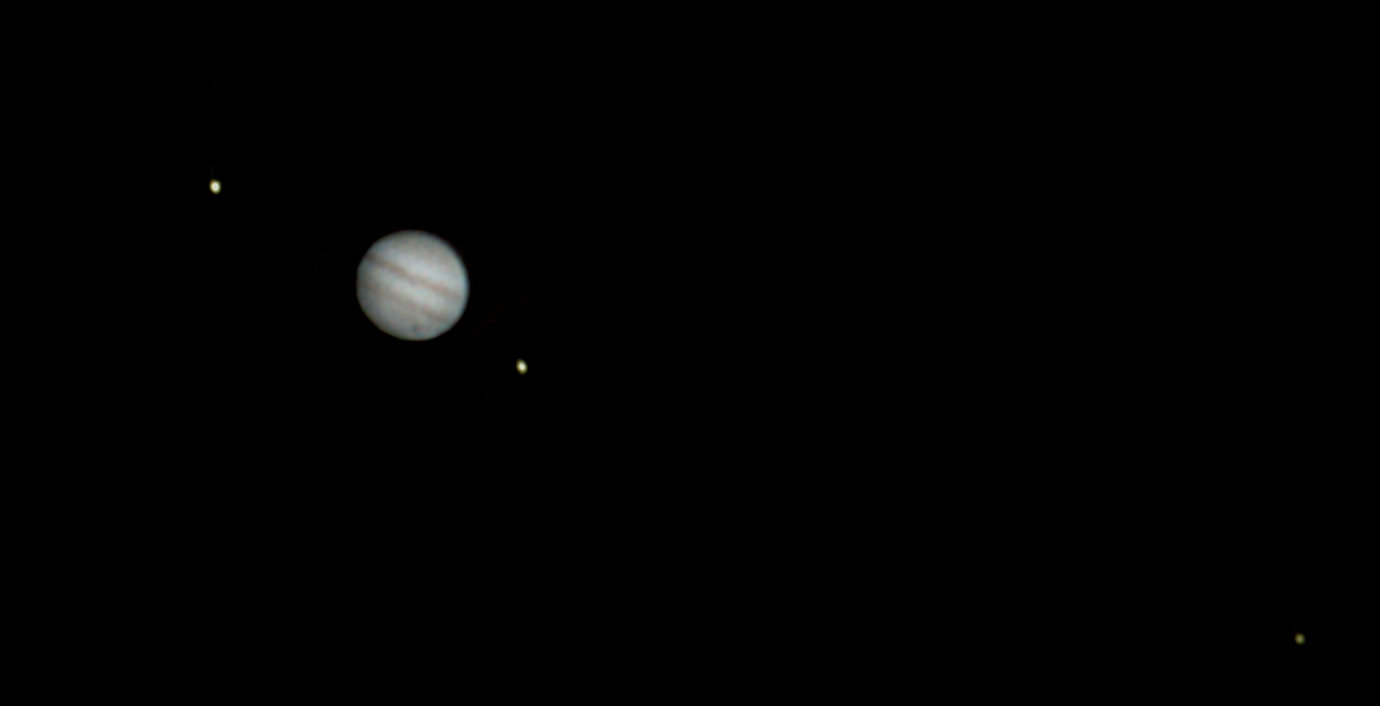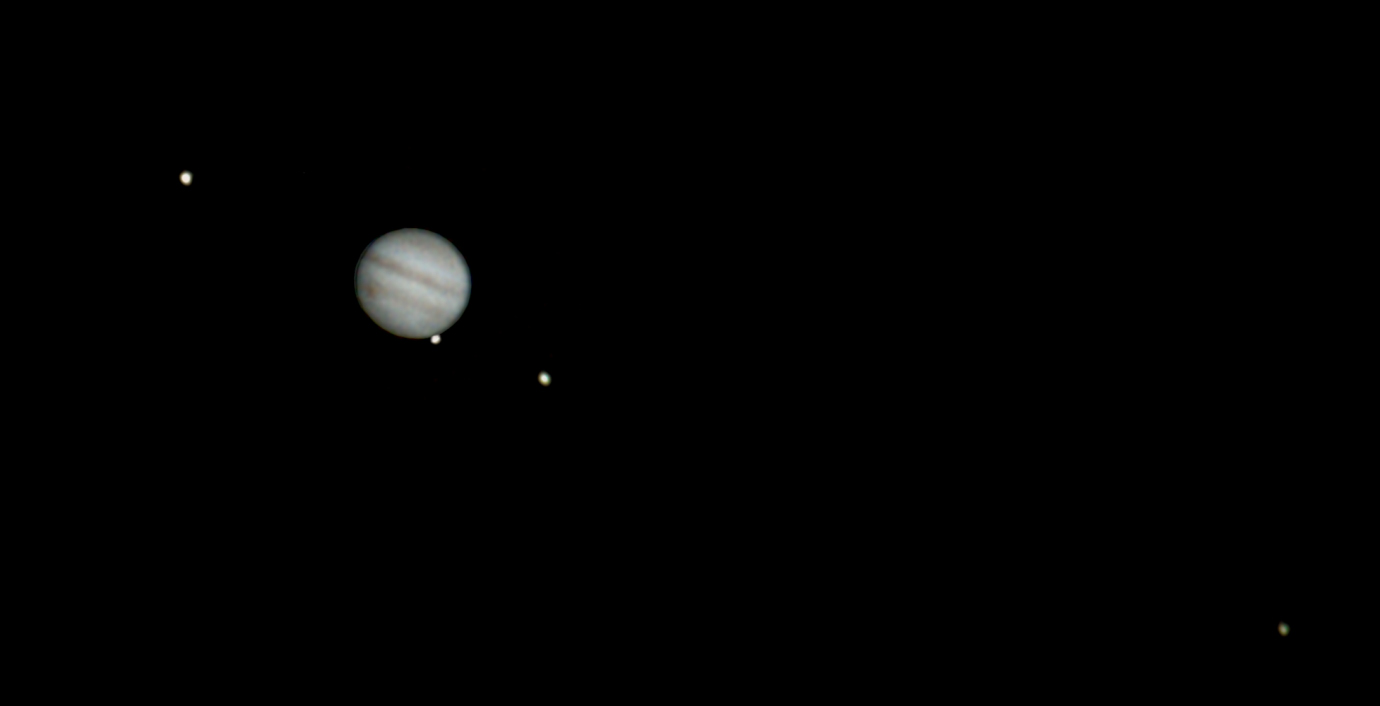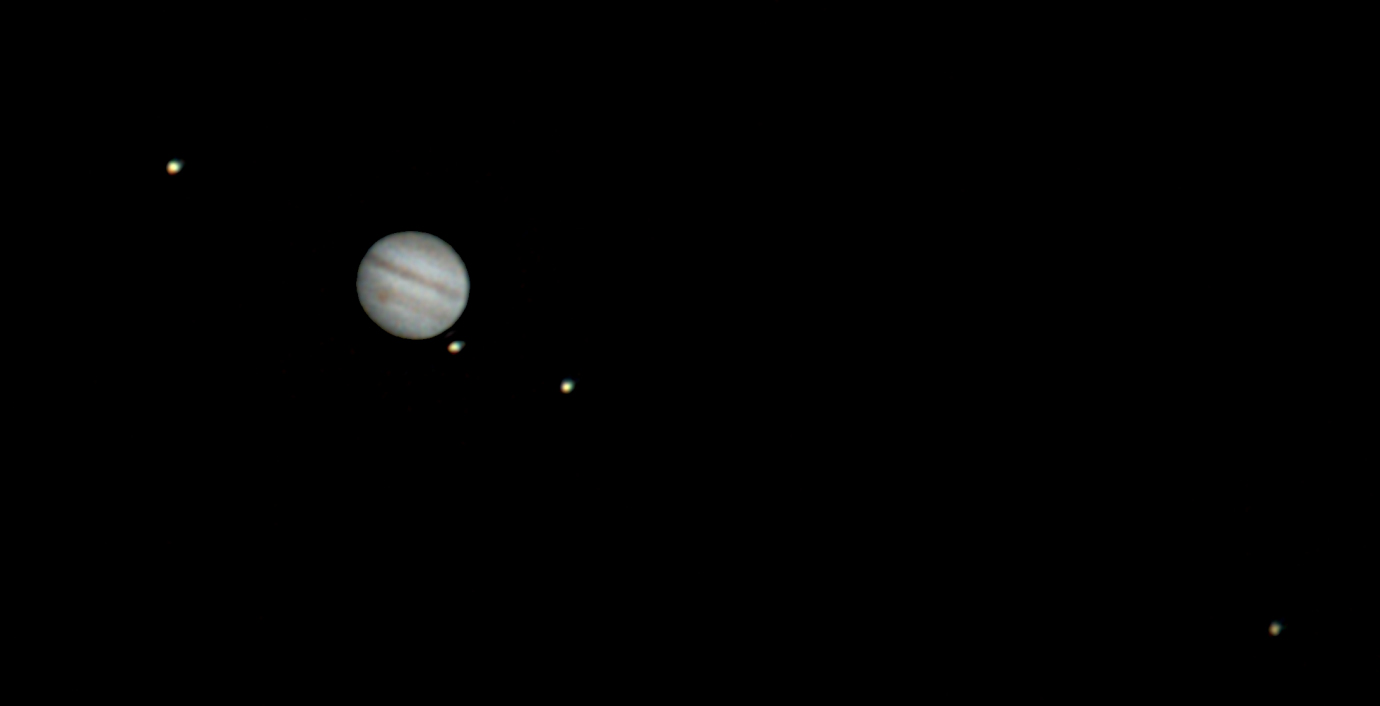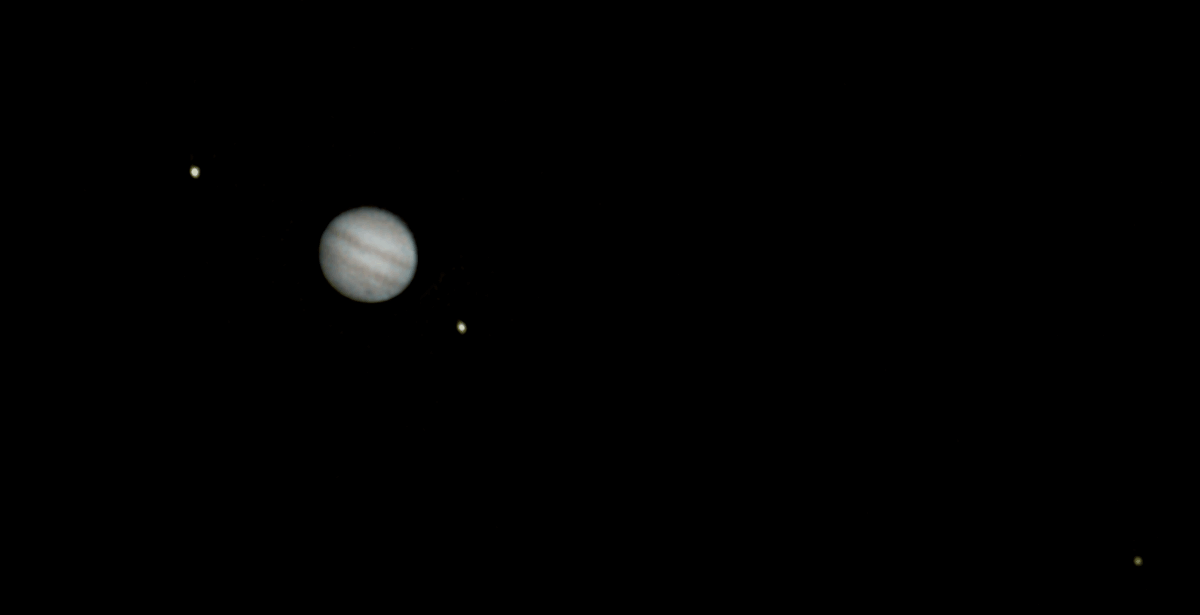I had another go at Jupiter during a clear night November 16. It is also is in a good position close to earth now, although only maxing out at 23° altitude at my location. I found a time that offered som interesting interaction with the moons and the Great Red Spot. As for the Mars images, Jupiter is bright enough to be captured with the 300mm f.4 PF+TC-14E+TC-20E III @ f/13 on Nikon 1 AW1 and adapter at ISO 160, bursts of 60 fps -1/60 sec exposures. Each Jupiter stack was typically 400-500 frames over about 3 min. Some gaps from battery and card change were interpolated using
WinJupos. Due to the low resolution it was not possible to detect the moons at this exposure - they had to be exposed separately with series of 30-60 frames at 1/4 sec exposure between the Jupiter exposures, and stacked and composited with the Jupiter stacks. This resulted in moons getting a bit on the bright side compared to what is realistic.
The moons from left to right are Io, Ganymede, Europa with Callisto to the far right. In this frame Ganymede is in front of Jupiter, and is hard to see, but there is a darker area that manifests on Jupiter's surface about 1/4 in from the right edge. The shade from Ganymede on the surface would be right inside the edge.
#1

#2
The Great Red Spot is just showing up on the left edge, and Ganymede has just stepped out and revealed itself more clearly.

The Great Red Spot in a more prominent position.
#3

And then the full 19 frame animation lasting about 100 minutes. The Ganymede shade is prominent in the first few frames on the right, and then the Great Red Spot rotates in from the left. It took quite a few trips through PIPP and GIMP to get things lined up.
#4

A line up of all the Jupiter stacks including Ganymede in some of them. (Open in new tab and click for full detail.)
#5
